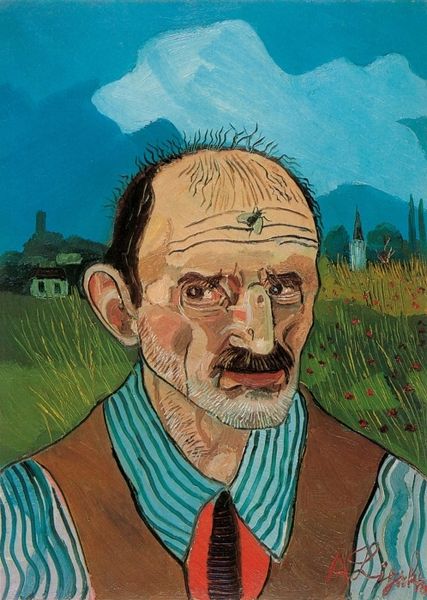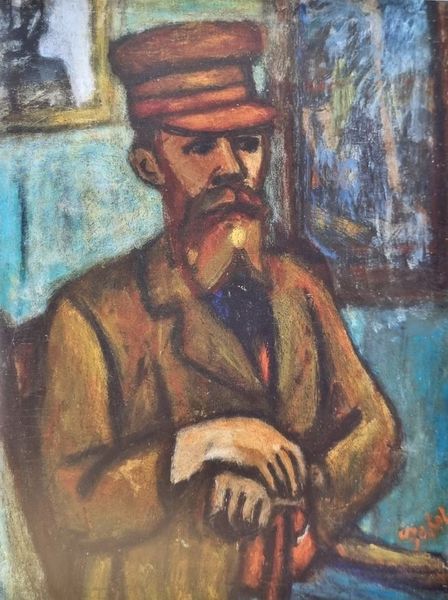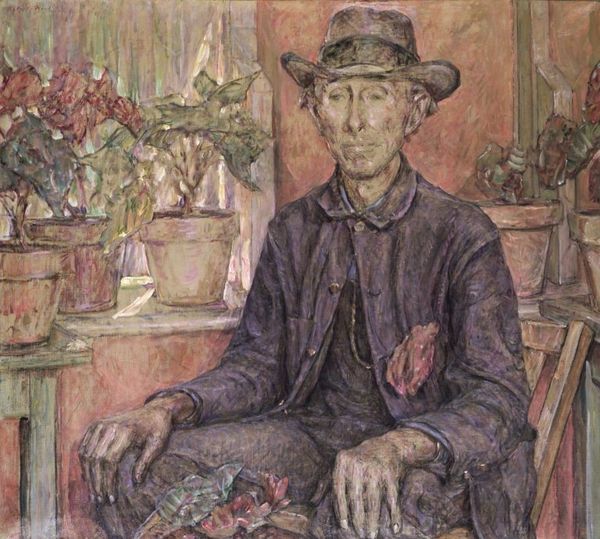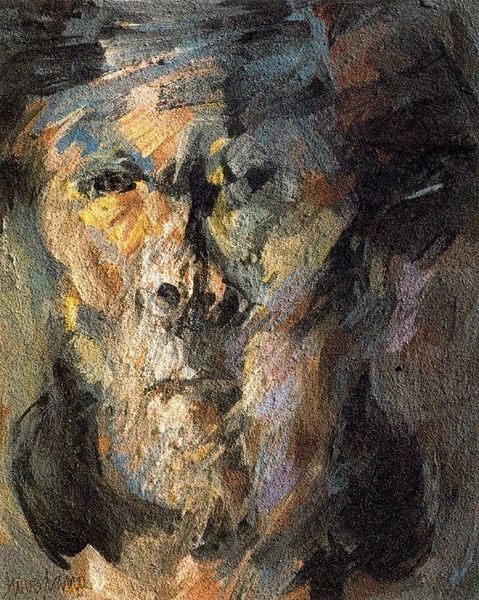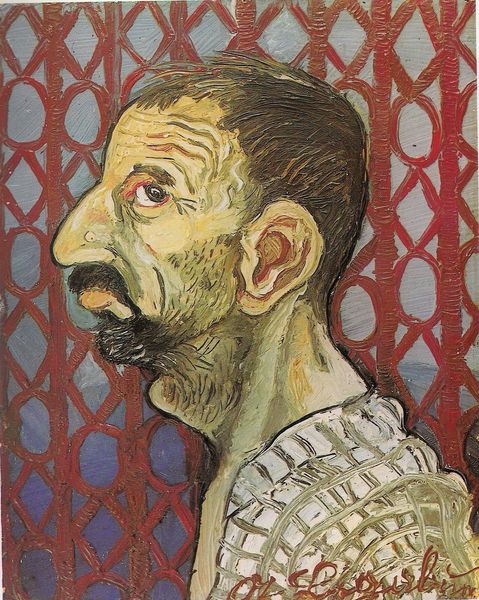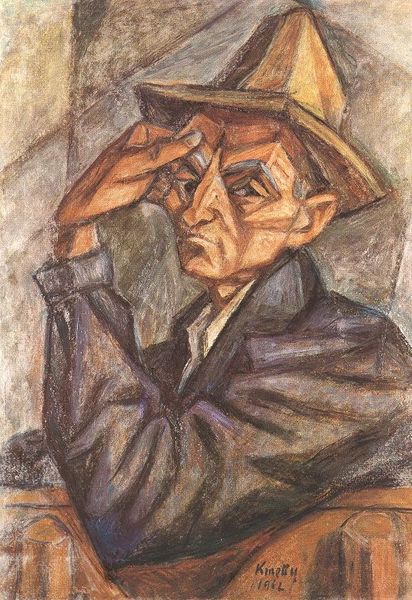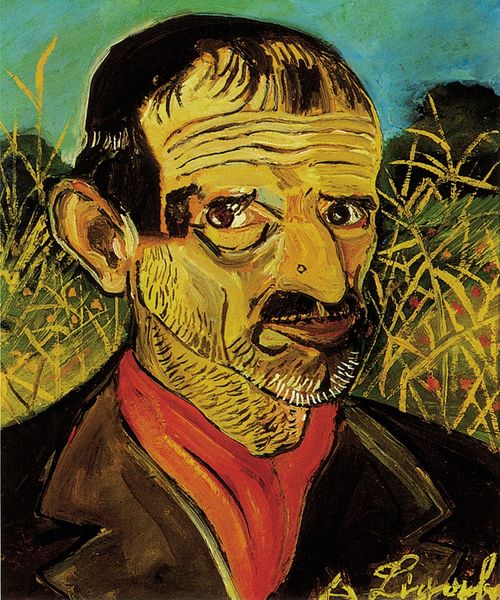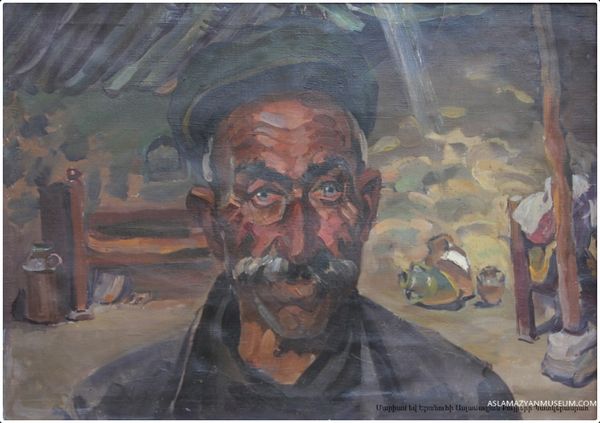
Dimensions: 53 x 69 cm
Copyright: Public domain
Curator: Pavel Filonov's "The Kolkhoznik," painted in 1931, offers a fascinating glimpse into the Soviet era, depicting a member of a collective farm. Editor: The immediate impact is... intense. It's a portrait, yet the face feels almost like a topographical map, a landscape etched with a stark, unwavering gaze. The artist creates a rather visceral sensation by focusing on the harsh light and contrast. Curator: Indeed. Filonov, working outside the Socialist Realist style of the time, presents a highly individualized and perhaps even critical view. This painting exists in that liminal space of Soviet Nonconformist Art where personal experience is given prominence during a period when individuality was disavowed in art. Editor: There's such tension in the composition. The subject's face is thrust forward, practically filling the canvas, and there's a deliberate rendering of light and texture. I see the color red reappearing almost as stigmata. Look at those marks on his neck—bruises or sores? Curator: These red marks and their potential violence could indicate not only the toll of collectivization on the peasantry but also symbolize the brutal consequences of state policy. The "kolkhoznik", as a figure, thus embodies both the promise and the trauma of socialist agrarian reform. This collective identity masks an individual grappling with hardship. Editor: Yet, beyond that socio-political interpretation, those recurring red specks also contribute to the painting’s structural complexity. They provide a visual counterpoint to the otherwise cool, muted tones of his face and beard. It gives his figure this strange kind of presence. The sharp angles lend it such force. Curator: Filonov's method, which he termed "analytical realism", attempted to represent reality through the depiction of its constituent parts. The seemingly abstract patterns are like a social x-ray that expose the societal mechanisms at play, revealing structures of oppression beneath surface appearances. Editor: Seeing the totality of the painting makes it more accessible, beyond that single face. He's situated within his landscape of houses and river, and those become little more than structural elements. It unifies the individual and his surroundings through an intense, unwavering application of visual components. Curator: This piece certainly expands our understanding of Soviet-era art, moving past idealized portrayals to engage with the gritty realities of the time. Editor: It is undeniably an aesthetic encounter that stays with you; it forces us to contend with art's structural elements but the very visceral impression that Filonov makes.
Comments
No comments
Be the first to comment and join the conversation on the ultimate creative platform.
